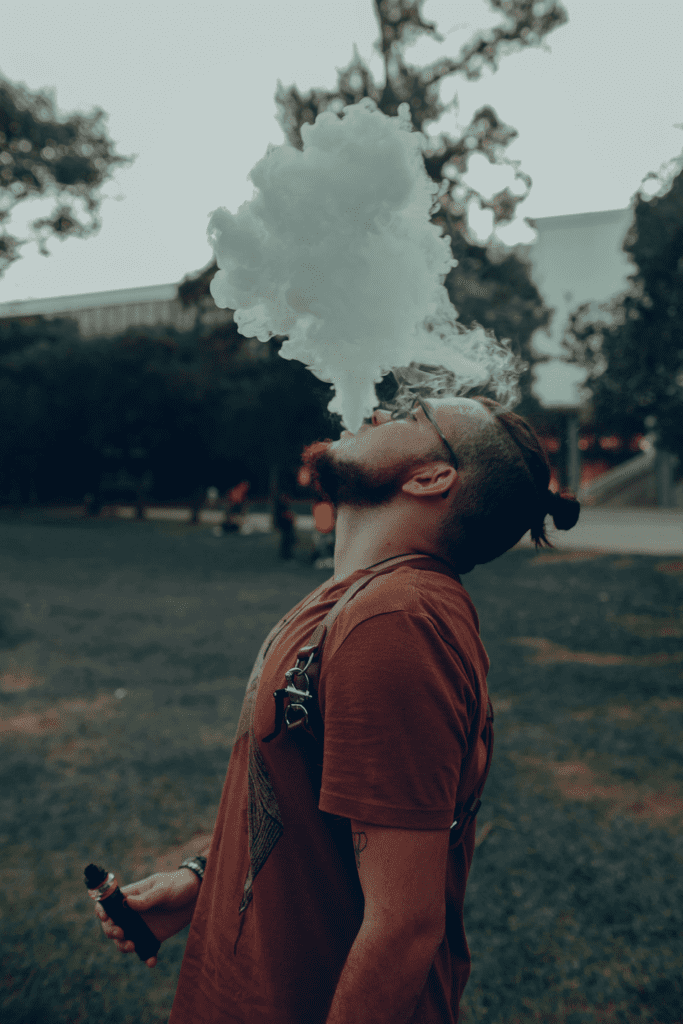Last updated on December 18th, 2024 at 03:14 am
- 1. Understanding Hypomania: An Overview
- 1.1 Defining Hypomania
- 1.2 Historical Context
- 2. Signs and Symptoms of Hypomania
- 2.1 Cognitive Symptoms
- 2.2 Behavioral Symptoms
- 2.3 Emotional Symptoms
- 3. Differentiating Hypomania from Mania
- 3.1 Duration and Severity
- 3.2 Psychotic Features
- 3.3 Hospitalization Requirements
- 4. Causes and Risk Factors for Hypomania
- 4.1 Genetic Factors
- 4.2 Neurobiological Factors
- 4.3 Environmental Triggers
- 5. Diagnosing Hypomania
- 5.1 Diagnostic Criteria
- 5.2 Assessment Tools
- 6. Treatment Approaches for Hypomania
- 6.1 Pharmacological Interventions
- 6.2 Psychosocial Interventions
- 7. Living with Hypomania: Strategies for Management
- 7.1 Lifestyle Modifications
- 7.2 Monitoring and Self-awareness
- 7.3 Workplace Considerations
- 8. Future Directions in Hypomania Research
- 8.1 Neuroimaging Studies
- 8.2 Genetic Research
- 8.3 Novel Treatment Modalities
- Hypomania vs Mania: Exploring Unique Differences
- Hypomania vs Mania Duration and Energy Levels
- Hypomania vs Mania Sleep Patterns and Activity Levels
- Hypomania vs Mania Emotional Regulation and Mood Lability
- Hypomania vs Mania Impulsivity and Risk-Taking Behavior
- Bipolar Disorder and Hypomania
- Cyclothymic Disorder and Mood Episodes
- Bipolar Medications and Treatment Options
- Diagnosis and Evaluation of Mood Disorders
- Comorbidities in Hypomania and Mania
- Stressors and Environmental Factors
- Hypomania vs Mania: Insights from Brain Imaging
- Hypomania and Future Research Directions
- Hypomania vs Mania Prognosis and Lifestyle Modifications
- Hypomania vs Mania Mixed Episodes and Rapid Cycling
- Hypomania vs Mania Thought Processes and Cognitive Function
- Hypomania vs Mania Speech Patterns and Insight
- Hypomania vs Mania Comorbidities and Medical Conditions
- Hypomania vs Mania Medication Effects and Antipsychotic Drugs
- Hypomania vs Mania Therapy Approaches and Healthcare Providers
- Hypomania vs Mania Stressors, Lifestyle Factors, and Social Activities
- Hypomania vs Mania Prognosis and Medical Support
- Hypomania vs Mania Physical Exam and Hospital Setting
- Conclusion
- Frequently Asked Questions
- What Are the Key Differences Between Hypomania and Mania?
- How Do Episodes of Mania Differ From Hypomania in Terms of Duration?
- What Is the Impact of Sleep Patterns in Mania vs. Hypomania?
- How Do Mood Elevation Patterns Differ Between Mania and Hypomania?
- What Are the Common Symptoms of Mania Compared to Hypomania?
- How Do Energy Levels Vary in Mania vs. Hypomania?
- How Does Hypomania Affect Daily Life Differently Than Mania?
- How Are Risk-Taking Behaviors Different in Mania Versus Hypomania?
- How Does Mania Affect Cognitive Function Differently Than Hypomania?
- How Do Mania and Hypomania Affect Social Interactions Differently?
- What Is the Role of Treatment Options in Managing Mania Versus Hypomania?
- How Do Mania and Hypomania Differ in Terms of Insight and Self-Awareness?
- How Does the Age of Onset Differ for Mania and Hypomania?
- How Do Mania and Hypomania Differ in Terms of Comorbidities?
- How Do Mania and Hypomania Affect the Ability to Maintain a Regular Sleep Schedule?
- What Are the Differences in Medication Effects Between Mania and Hypomania?
- How Does Mania Differ From Hypomania in Terms of Hospitalization Needs?
- How Do Mania and Hypomania Differ in Terms of Emotional Regulation?
- How Does Mania Affect Productivity Compared to Hypomania?
- What Are the Differences in Thought Processes Between Mania and Hypomania?
1. Understanding Hypomania: An Overview
Hypomania is a complex mood state characterized by elevated energy, heightened productivity, and increased goal-directed activities. While it shares some similarities with mania, hypomania is generally less severe and does not typically cause significant impairment in daily functioning.
However, it can still pose challenges for individuals experiencing it and may be a sign of underlying mental health conditions that require attention.
Let’s discover how Hypomania vs Mania differ in presentation and severity. Dive into the signs, challenges, and treatment approaches for these mental health conditions.
1.1 Defining Hypomania
Hypomania is often described as a milder form of mania, typically associated with bipolar disorder type II. It involves a distinct period of abnormally and persistently elevated, expansive, or irritable mood, accompanied by increased energy or activity. This state lasts for at least four consecutive days and is observable by others.
1.2 Historical Context
The concept of hypomania has evolved over time. In the early 20th century, German psychiatrist Emil Kraepelin first described a milder form of mania, which later became known as hypomania. Since then, our understanding of mood disorders has significantly expanded, leading to more nuanced diagnostic criteria and treatment approaches.
2. Signs and Symptoms of Hypomania
Recognizing the signs and symptoms of hypomania is crucial for early intervention and appropriate management. While individual experiences may vary, several common indicators can help identify a hypomanic episode.
2.1 Cognitive Symptoms
• Racing thoughts
• Increased creativity and productivity
• Difficulty concentrating or staying focused
• Enhanced problem-solving abilities
• Overconfidence in one’s abilities or ideas
2.2 Behavioral Symptoms
• Increased goal-directed activities
• Engaging in risky or impulsive behaviors
• Decreased need for sleep
• Increased talkativeness or pressured speech
• Heightened sociability and gregariousness
2.3 Emotional Symptoms
• Elevated mood or euphoria
• Irritability or agitation
• Increased self-esteem or grandiosity
• Mood lability (rapid mood changes)
• Heightened sensitivity to emotional stimuli


3. Differentiating Hypomania from Mania
While hypomania and mania share some similarities, there are crucial differences that distinguish these two mood states. Understanding these distinctions is essential for accurate diagnosis and appropriate treatment.
3.1 Duration and Severity
Hypomania typically lasts for at least four consecutive days, while manic episodes persist for a week or longer. Manic episodes are generally more severe, often causing significant impairment in social or occupational functioning, whereas hypomania usually allows individuals to maintain their daily routines.
3.2 Psychotic Features
Unlike mania, hypomania does not involve psychotic symptoms such as delusions or hallucinations. The absence of these features is a key differentiating factor between the two states.
3.3 Hospitalization Requirements
Manic episodes frequently necessitate hospitalization to ensure the individual’s safety and provide intensive treatment. In contrast, hypomanic episodes rarely require inpatient care, as the symptoms are generally less disruptive and can often be managed on an outpatient basis.
4. Causes and Risk Factors for Hypomania
The exact causes of hypomania are not fully understood, but research suggests that a combination of genetic, biological, and environmental factors contribute to its development.
4.1 Genetic Factors
Studies have shown that individuals with a family history of bipolar disorder or other mood disorders are at an increased risk of experiencing hypomania. Genetic predisposition plays a significant role in the development of mood disorders, including those characterized by hypomanic episodes.


4.2 Neurobiological Factors
Imbalances in neurotransmitters, particularly dopamine and serotonin, have been implicated in the development of hypomania. Additionally, abnormalities in brain structure and function, especially in regions responsible for emotion regulation and reward processing, may contribute to the onset of hypomanic symptoms.
4.3 Environmental Triggers
Various environmental factors can trigger hypomanic episodes in susceptible individuals. These may include:
• Significant life changes or stressors
• Sleep deprivation or disrupted sleep patterns
• Substance use or abuse
• Seasonal changes, particularly the transition to spring or summer
• Certain medications, especially antidepressants
5. Diagnosing Hypomania
Accurate diagnosis of hypomania is crucial for appropriate treatment and management. Mental health professionals use specific criteria and assessment tools to identify hypomanic episodes and distinguish them from other mood states.
5.1 Diagnostic Criteria
The Diagnostic and Statistical Manual of Mental Disorders (DSM-5) outlines specific criteria for diagnosing a hypomanic episode. These include:
• A distinct period of abnormally and persistently elevated, expansive, or irritable mood and increased goal-directed activity or energy, lasting at least four consecutive days
• The presence of at least three (or four if the mood is only irritable) of the following symptoms:
– Inflated self-esteem or grandiosity
– Decreased need for sleep
– Increased talkativeness or pressure to keep talking
– Flight of ideas or racing thoughts
– Distractibility
– Increase in goal-directed activity or psychomotor agitation
– Excessive involvement in pleasurable activities with a high potential for painful consequences
• The episode is associated with an unequivocal change in functioning that is uncharacteristic of the person when not symptomatic
• The disturbance in mood and change in functioning are observable by others
• The episode is not severe enough to cause marked impairment in social or occupational functioning or to necessitate hospitalization
5.2 Assessment Tools
Mental health professionals may use various assessment tools to aid in the diagnosis of hypomania. These may include:
• Mood Disorder Questionnaire (MDQ)
• Hypomania Checklist (HCL-32)
• Young Mania Rating Scale (YMRS)
• Bipolar Spectrum Diagnostic Scale (BSDS)
These tools help clinicians gather comprehensive information about an individual’s symptoms, their duration, and their impact on daily functioning.
6. Treatment Approaches for Hypomania
Effective management of hypomania often involves a combination of pharmacological and psychosocial interventions. The primary goals of treatment are to stabilize mood, prevent the escalation of symptoms, and improve overall functioning.


6.1 Pharmacological Interventions
Medications commonly used in the treatment of hypomania include:
• Mood stabilizers (e.g., lithium, valproic acid, lamotrigine)
• Atypical antipsychotics (e.g., quetiapine, olanzapine, aripiprazole)
• Antidepressants (used cautiously and typically in combination with mood stabilizers)
The choice of medication depends on the individual’s specific symptoms, medical history, and potential side effects.
6.2 Psychosocial Interventions
Various psychotherapeutic approaches can be beneficial in managing hypomania and preventing future episodes:
• Cognitive-behavioral therapy (CBT)
• Interpersonal and social rhythm therapy (IPSRT)
• Family-focused therapy
• Psychoeducation
These interventions help individuals develop coping strategies, identify triggers, and maintain stable daily routines.
7. Living with Hypomania: Strategies for Management
While professional treatment is essential, individuals experiencing hypomania can also implement various self-management strategies to help maintain stability and improve their quality of life.
7.1 Lifestyle Modifications
• Establishing and maintaining a consistent sleep schedule
• Engaging in regular exercise and physical activity
• Practicing stress-reduction techniques, such as mindfulness or meditation
• Avoiding alcohol and recreational drugs
7.2 Monitoring and Self-awareness
• Keeping a mood diary to track symptoms and identify patterns
• Learning to recognize early warning signs of hypomanic episodes
• Developing a support network of family and friends who can provide objective feedback
7.3 Workplace Considerations
• Communicating with employers about necessary accommodations
• Setting realistic goals and expectations
• Implementing strategies to manage increased productivity without overextending oneself
8. Future Directions in Hypomania Research
As our understanding of hypomania continues to evolve, several areas of research hold promise for improving diagnosis, treatment, and management of this complex mood state.


8.1 Neuroimaging Studies
Advanced neuroimaging techniques may provide deeper insights into the brain mechanisms underlying hypomania, potentially leading to more targeted treatments.
8.2 Genetic Research
Ongoing genetic studies aim to identify specific genes associated with bipolar disorder and hypomania, which could pave the way for personalized treatment approaches.
8.3 Novel Treatment Modalities
Emerging therapies, such as transcranial magnetic stimulation (TMS) and ketamine-based treatments, are being explored for their potential in managing treatment-resistant mood disorders, including those characterized by hypomanic episodes.
Hypomania vs Mania: Exploring Unique Differences
Hypomania and mania share common features but differ in severity and impact on daily activities. Episodes of mania often lead to significant impairment, whereas hypomania allows individuals to maintain a semblance of normal day life.
The differences between mania and hypomania also extend to hospitalization requirements. Mania frequently necessitates hospital care due to its severe forms.
Hypomania vs Mania Duration and Energy Levels
The duration and intensity of episodes distinguish hypomania from mania. While hypomania may last a couple of days, manic episodes often persist longer, leading to a higher severity of symptoms.
Individuals with hypomania often experience an increase in energy levels. However, they do not experience the full-blown manic episodes that characterize severe mania.
Hypomania vs Mania Sleep Patterns and Activity Levels
Lack of sleep is a critical factor in distinguishing these mood states. During hypomanic episodes, individuals often function with fewer hours of sleep, whereas mania symptoms can result in no sleep at all for extended periods.
Elevated mood and heightened activity levels are observed in both conditions. However, hypomania is less disruptive compared to the extreme mood shifts seen in full-blown mania.


Hypomania vs Mania Emotional Regulation and Mood Lability
Mood lability is common in both hypomania and mania. The severity of mood swings is significantly higher during episodes of mania, where an expansive mood can escalate into severe forms of irritability or euphoria.
Hypomania presents as elevated mood without severe disturbance. Social activities or daily functioning are often maintained during hypomanic episodes.
Hypomania vs Mania Impulsivity and Risk-Taking Behavior
Risky behaviors are more pronounced in mania, including reckless driving or excessive spending. Individuals experiencing an episode of hypomania may engage in impulsive actions, but they do not typically reach the dangerous levels seen in episodes of mania.
Hypomania vs mania risk-taking behavior is differentiated by the degree of impairment and danger involved. Mania can significantly impact safety and requires more intervention.
Bipolar Disorder and Hypomania
Hypomania is frequently observed in Bipolar Disorder, particularly Bipolar II, where episodes of hypomania are interspersed with periods of depression. Episodes of depression are common in bipolar disorder patients, contrasting with the elevated mood seen during hypomania.
Bipolar disorder symptoms may also involve full-blown mania, distinguishing Bipolar I from Bipolar II. This distinction is essential in tailoring appropriate treatment approaches.
Cyclothymic Disorder and Mood Episodes
Cyclothymic disorder involves alternating mood swings that resemble hypomanic and depressive symptoms. These swings do not meet the criteria for a full-blown episode of hypomania or major depression.
These mild but chronic mood episodes can evolve into more severe forms. They may potentially escalate into bipolar mania or depressive disorder if left untreated.
Bipolar Medications and Treatment Options
Effective treatment for hypomania often involves a combination of medication, such as mood stabilizers or antipsychotic drugs, and therapy approaches like cognitive-behavioral therapy. Bipolar medications, including extended-release injectable antipsychotic medications, are prescribed to manage acute mania and reduce the chances of mood episodes.
Medication adherence is crucial to prevent future mood episodes and maintain daily life stability. Regular check-ins with healthcare professionals are essential for successful long-term management.


Diagnosis and Evaluation of Mood Disorders
Diagnosing hypomania requires a thorough evaluation of mood disorders by healthcare professionals. A physical exam is often part of the assessment, alongside mental health evaluations.
Healthcare providers may utilize tools like the Mood Disorder Questionnaire to assess hypomania diagnostic criteria. Early diagnosis of mania and hypomania is key to developing an effective treatment plan.
Comorbidities in Hypomania and Mania
Hypomania vs mania comorbidities can include various mental health disorders. Conditions such as attention-deficit/hyperactivity disorder and schizoaffective disorder often coexist, complicating the overall treatment plan.
The impact of symptoms varies from person to person. Some individuals may experience mixed features involving both manic and depressive symptoms.
Stressors and Environmental Factors
Stressful life events can act as triggers for both hypomania and mania. Environmental factors, such as bright lights or seasonal changes, also influence mood episodes, particularly hypomania vs mania seasonal patterns.
These stressors can significantly impact daily activities. Identifying triggers can help in managing and preventing further mood instability.
Hypomania vs Mania: Insights from Brain Imaging
Research into the brains of people with bipolar illness has provided insights into the exact mechanisms involved. Brain imaging studies have shown abnormalities in the prefrontal cortex and other brain regions that regulate mood and decision-making.
These studies also aim to determine the etiology of mania and hypomania. They shed light on how different brain structures are involved in mood disturbance.
Hypomania and Future Research Directions
Future research is exploring the use of electroconvulsive therapy and other novel approaches for individuals with treatment-resistant forms of mood disorders. New insights into hypomania causes and triggers, combined with advancements in treatment options, can improve prognosis and quality of life for adults with mood disorders.
Studies such as those conducted by Frey BN and Kapczinski F have been instrumental in expanding our understanding of hypomania and its progression. More research is needed to develop targeted treatment strategies.
Hypomania vs Mania Prognosis and Lifestyle Modifications
The prognosis for hypomania vs mania varies depending on the severity of symptoms and the effectiveness of the treatment plan. Lifestyle modifications, such as maintaining a regular sleep schedule and adhering to a healthy diet, are crucial for stabilizing mood and preventing acute mood episodes.
Engaging in activities that promote mental wellness, such as mindfulness and stress reduction, can help minimize the occurrence of hypomanic and manic episodes. A proactive approach to health is essential in managing these mood disorders.
For more detailed information on treatment approaches, you may refer to the Florida Center for Behavioral Health. Additionally, studies published in PMC Free Article provide a wealth of information on the clinical features of hypomania and mania.
For resources related to medication and healthcare options, visit the Substance Abuse and Mental Health Services Administration for guidelines and support. Similarly, Online Psychiatry offers insights into psychiatry visits and how to access mental health disorder treatments remotely.


Hypomania vs Mania Mixed Episodes and Rapid Cycling
Episodes of hypomania and mania can sometimes occur alongside depressive symptoms, leading to mixed features. These mixed mood episodes can be challenging to manage, requiring a comprehensive treatment plan from healthcare professionals.
Rapid cycling is another feature observed in bipolar disorder, where individuals experience four or more mood episodes within a year. Rapid cycling complicates the course of hypomania and mania.
Hypomania vs Mania Thought Processes and Cognitive Function
The thought processes during hypomania often involve flights of ideas, where the mind races from one thought to the next. Mania symptoms may also include an inflated sense of creativity and heightened distractibility.
Hypomania vs mania cognitive function differs significantly. Mania can result in impaired insight and decision-making, potentially impacting aspects of life such as professional life and social interactions.
Hypomania vs Mania Speech Patterns and Insight
Speech patterns during mania are typically more pressured, rapid, and difficult to interrupt compared to hypomania. Hypomania vs mania speech patterns reveal how mania can escalate into disorganized, excessive talking that affects daily activities.
Mania symptoms often involve a lack of insight into one’s condition. Individuals with hypomania may retain a greater level of self-awareness.
Hypomania vs Mania Comorbidities and Medical Conditions
Mania and hypomania can be complicated by coexisting medical conditions. Comorbidities such as psychotic disorders, including symptoms of psychosis or false beliefs, can arise during severe mania.
Schizoaffective disorder and other affective disorder conditions can further impact the severity of mood disturbance. These complications require tailored treatment efforts for hypomania and mania.
Hypomania vs Mania Medication Effects and Antipsychotic Drugs
The management of hypomania vs mania often involves antipsychotic medication by mouth or extended-release injectable formulations. Antipsychotic drugs can help alleviate manic symptoms, such as severe mood swings and agitation.
The effects of medications must be monitored closely to minimize side effects. Proper medication management is particularly important in agitated patients.
Hypomania vs Mania Therapy Approaches and Healthcare Providers
Therapy approaches for hypomania vs mania include interventions like interpersonal therapy and family-focused therapy. These approaches help manage bipolar symptoms and provide support in navigating daily life challenges.
Healthcare providers, including mental health specialists and counselors, play a critical role in creating individualized treatment plans. Effective treatment often requires a multidisciplinary team.
Hypomania vs Mania Stressors, Lifestyle Factors, and Social Activities
Stressors such as financial difficulties and work-related stress can trigger hypomania or mania. Lifestyle factors, including irregular sleep patterns and substance use, can exacerbate mood episodes.
Ensuring a balanced day life with structured social activities is crucial in mitigating hypomania vs mania stressors. This approach helps in promoting overall mood stability.
Hypomania vs Mania Prognosis and Medical Support


The prognosis of hypomania and mania largely depends on prompt intervention and ongoing medical support. Consistent engagement with healthcare professionals helps address acute mania and hypomania symptoms effectively, minimizing the long-term impact of symptoms.
Anticonvulsant drugs are also considered in cases where traditional treatment options may not suffice. These medications can help in managing mood instability when other approaches are ineffective.
Hypomania vs Mania Physical Exam and Hospital Setting
A physical exam can help rule out other medical conditions that may mimic symptoms of mania or hypomania. A thorough examination is an essential first step in accurate diagnosis.
Hospital stays may be required in severe cases of mania to ensure the individual’s safety and stability. In less severe cases, outpatient management with regular psychiatry visits is often sufficient to stabilize mood episodes and maintain day-to-day functioning.
For additional resources on bipolar disorder treatment, consider visiting the National Institute of Mental Health for reliable information and support options.
Conclusion
Hypomania is a complex mood state that requires careful assessment, diagnosis, and management. By understanding its symptoms, causes, and treatment options, individuals experiencing hypomania can work towards achieving mood stability and improved overall well-being.
Continued research and advancements in the field hold promise for even more effective interventions in the future.
From Embrace Inner Chaos to your inbox
Transform your Chaos into authentic personal growth – sign up for our free weekly newsletter! Stay informed on the latest research advancements covering:
Narcissistic Personality Disorder (NPD)
Frequently Asked Questions
What Are the Key Differences Between Hypomania and Mania?
Hypomania and mania are often part of bipolar disorder, but they differ in intensity and impact on daily life. Mania is characterized by more severe symptoms, including an inflated sense of self and increased risky behaviors.
Hypomania features similar but less severe symptoms, such as elevated mood and increased energy levels, that do not typically disrupt functioning to the same extent. According to the National Institute of Mental Health, mania may involve psychosis, while hypomania usually does not.
How Do Episodes of Mania Differ From Hypomania in Terms of Duration?
Episodes of mania often last for at least one week and may require hospital care. Hypomania episodes usually last for a few days and do not require emergency intervention.
The extended duration of mania can significantly impair an individual’s ability to manage daily activities, such as professional and social responsibilities. As highlighted by the American Psychiatric Association, this difference in episode length is crucial for diagnosis and treatment planning.
What Is the Impact of Sleep Patterns in Mania vs. Hypomania?
A lack of sleep is a common symptom in both mania and hypomania, but its severity differs. In mania, individuals may go for several days without sleep, leading to severe forms of mood disturbance.
During hypomania, sleep is also reduced, but the decrease is not as extreme, often resulting in getting fewer hours of sleep rather than none. The Cleveland Clinic notes that persistent sleep deprivation in manic episodes can lead to psychosis, whereas hypomanic episodes might result in milder fatigue.


How Do Mood Elevation Patterns Differ Between Mania and Hypomania?
Both mania and hypomania are characterized by elevated mood, but mania presents an expansive and more extreme mood. The elevated mood during mania can escalate into feelings of grandeur or false beliefs about one’s abilities.
In hypomania, the elevation is noticeable yet more controlled, often resulting in increased creativity or productivity without leading to psychotic disorders. As discussed by Mayo Clinic, recognizing these differences helps in tailoring an effective treatment plan.
What Are the Common Symptoms of Mania Compared to Hypomania?
Common symptoms of mania include severe mood swings, impulsivity, grandiosity, and episodes of psychosis. Hypomania features milder forms of these symptoms, such as increased energy and talkativeness without the need for hospitalization.
Manic symptoms often disrupt day-to-day life, leading to a full-blown episode that requires immediate medical attention. The World Health Organization points out that identifying early symptoms is crucial to preventing a progression from hypomania to full-blown mania.
How Do Energy Levels Vary in Mania vs. Hypomania?
In mania, energy levels can be extraordinarily high, often resulting in severe mania, which may lead to reckless driving or other risky behaviors. Hypomania also involves increased energy but to a less extreme degree.
According to Harvard Health Publishing, energy surges during hypomania can still affect relationships and work but do not usually result in dangerous or unlawful behaviors.
How Does Hypomania Affect Daily Life Differently Than Mania?
While mania often impairs daily activities, requiring hospital care or close supervision, hypomania may enhance day-to-day experiences by increasing productivity or sociability. However, this increased activity level may still have consequences, such as difficulty maintaining a regular sleep schedule.
The Mental Health Foundation indicates that hypomania can positively influence creativity, although the lack of sleep can impact other aspects of life like professional responsibilities and health.
How Are Risk-Taking Behaviors Different in Mania Versus Hypomania?
Risky behaviors, such as reckless spending or dangerous driving, are more pronounced in mania compared to hypomania. Mania often includes an inflated sense of self and poor judgment, leading to actions that may require legal or medical intervention.
Hypomania involves increased impulsivity but does not usually escalate to behaviors that necessitate emergency care. As explained by Johns Hopkins Medicine, individuals experiencing hypomania may take calculated risks, whereas those in mania may lose all sense of consequences.
How Does Mania Affect Cognitive Function Differently Than Hypomania?
Mania can significantly impair cognitive function, leading to disorganized thinking, flights of ideas, and even psychosis. In contrast, hypomania can enhance focus and mental acuity temporarily, often making individuals feel more creative and capable.
This difference in cognitive function explains why people with hypomania might appear more productive, while those in mania struggle with maintaining coherent thoughts. The National Alliance on Mental Illness (NAMI) emphasizes that cognitive symptoms are crucial in differentiating between these two states and should be carefully monitored.
How Do Mania and Hypomania Affect Social Interactions Differently?
Mania often leads to strained social interactions due to irritability, impulsive actions, and sometimes aggressive behavior. This can result in the need for hospitalization or intervention by healthcare professionals.
In hypomania, social interactions are generally more positive, with increased sociability and reduced inhibitions. However, prolonged episodes can lead to misunderstandings and conflicts. The National Health Service (NHS) reports that, although hypomania may initially improve social relationships, it can eventually lead to exhaustion and interpersonal problems if untreated.


What Is the Role of Treatment Options in Managing Mania Versus Hypomania?
Treatment options for mania often involve antipsychotic drugs and hospitalization, especially during acute mania phases. For hypomania, treatment may include medication management and therapy to stabilize mood without the need for a hospital setting.
Hypomania treatment also involves monitoring activity levels and mood swings to prevent escalation. According to Stanford Health Care, medication adherence and consistent check-ins with mental health professionals are essential for both mania and hypomania, but treatment intensity varies based on symptom severity.
How Do Mania and Hypomania Differ in Terms of Insight and Self-Awareness?
Individuals experiencing mania often lack insight into their condition, believing their actions are rational despite severe symptoms like false beliefs or extreme mood shifts. Hypomanic individuals, on the other hand, may retain a degree of self-awareness, recognizing that they are behaving differently.
This awareness can aid in seeking treatment before the condition escalates into full-blown mania. The American Psychological Association notes that this difference in self-awareness is key in distinguishing between these two states and implementing timely intervention.
How Does the Age of Onset Differ for Mania and Hypomania?
The age of onset for both mania and hypomania often falls within late adolescence to early adulthood. Hypomania is more likely to be the first episode experienced in bipolar disorder patients.
Mania, due to its severe symptoms, may appear later and often after an individual has experienced multiple hypomanic episodes. Yale Medicine highlights that understanding the typical age of onset can help healthcare providers make an accurate diagnosis and develop an effective treatment plan early in the course of the disorder.
How Do Mania and Hypomania Differ in Terms of Comorbidities?
Mania frequently co-occurs with other severe mental health conditions, such as schizoaffective disorder or major depression, often complicating the treatment approach. Hypomania can also be comorbid with conditions like anxiety or depressive disorders, but the overlap tends to be less severe.
Managing comorbidities requires a comprehensive evaluation of mood disorders, including the presence of mixed episodes. The University of California, San Francisco (UCSF) suggests that healthcare providers must consider these comorbid conditions to avoid misdiagnosis and inappropriate treatment.
How Do Mania and Hypomania Affect the Ability to Maintain a Regular Sleep Schedule?
Maintaining a regular sleep schedule is challenging in both mania and hypomania, but the extent differs. Mania can lead to complete insomnia for days, often necessitating medical intervention.
Hypomania also reduces the number of hours of sleep but typically does not result in complete sleep deprivation. The Sleep Foundation emphasizes that consistent sleep disturbances can escalate hypomania into mania, making early sleep intervention a vital component of treatment.
What Are the Differences in Medication Effects Between Mania and Hypomania?
Medications such as antipsychotic drugs are more commonly prescribed for mania due to the need for rapid symptom control. Hypomania may be managed with mood stabilizers or anticonvulsant drugs, with the goal of preventing the progression to mania.
Extended-release injectable antipsychotic medications may also be used in severe mania but are generally not needed for hypomania. According to Cedars-Sinai, understanding medication effects is crucial for determining the appropriate intervention level and ensuring medication adherence.


How Does Mania Differ From Hypomania in Terms of Hospitalization Needs?
Mania frequently requires hospitalization due to the severity of symptoms, such as psychosis, severe mood swings, or risk of harm to self and others. Hypomania, however, rarely requires hospital care, as the symptoms are less disruptive and do not pose an immediate risk to the individual’s safety.
The Florida Center for Behavioral Health explains that the differences in hospitalization needs underscore the varying impact of these two states on both personal health and public safety.
How Do Mania and Hypomania Differ in Terms of Emotional Regulation?
Emotional regulation is severely impaired in mania, often resulting in extreme mood shifts, ranging from euphoria to irritability. These rapid changes can be distressing and often require medication to stabilize.
In hypomania, emotional regulation is affected, but individuals may still manage to exert some control, resulting in less severe emotional disruptions. According to Mount Sinai Health System, understanding how emotional regulation varies between mania and hypomania is key to providing effective treatment and improving long-term outcomes.
How Does Mania Affect Productivity Compared to Hypomania?
While hypomania can temporarily boost productivity by increasing energy and motivation, mania often disrupts productivity due to its severity. The disorganized thinking and impulsive behaviors associated with mania make it difficult for individuals to focus on tasks for extended periods.
Hypomania, on the other hand, might enhance productivity without causing major impairments in cognitive function or behavior. Columbia Psychiatry notes that distinguishing between productive hypomania and disruptive mania is essential for managing bipolar disorder effectively.
What Are the Differences in Thought Processes Between Mania and Hypomania?
Thought processes in mania can become erratic, featuring rapid speech, racing thoughts, and an inability to focus, often escalating to symptoms of psychosis. In hypomania, thought processes are accelerated but still coherent, leading to increased creativity and problem-solving capabilities without significant confusion.
Massachusetts General Hospital points out that these differences are crucial for mental health specialists to identify, as they can inform the development of a treatment plan that targets the specific features of each episode.




